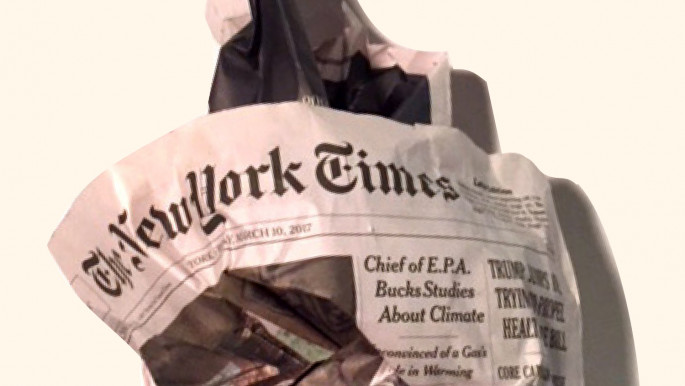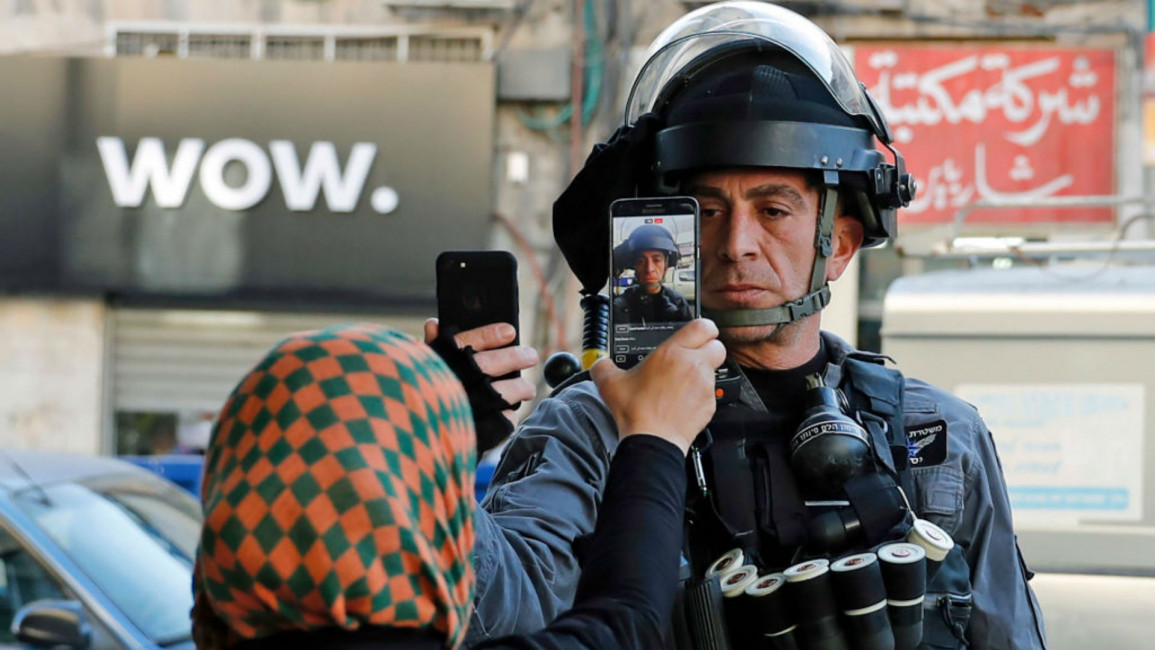
The wrong story: Palestine, Israel and the media
It is therefore, no surprise that he seeks to put the record straight on Israel and Palestine and offer an alternative account to the one you might find in the mainstream media.
Shupak says that the story we are fed by the corporate media of today is "the wrong story", which is exactly what the book, published by OR Books, is called' 'The Wrong Story: Palestine, Israel and the Media'.
With a particular focus on The New York Times (NYT) editorials published during the third Israeli incursion on Gaza in 2014, and Operation Protective Edge, Shupak lays out just where things go awry in the media:
"People can and do think critically about the media they consume. Yet when media outlets misrepresent issues, they hamper the public's capacity to systematically understand the topics of the day." writes Shupak.
Both sides
So people may be critical about what they read, but they still may not be getting the facts. What, though, does the media have to gain by misleading people?
One idea Shupak discusses is that media reporting occurs in "cultural contexts" and "well-established knowledge structures", which in the West includes a well established toolkit of Islamophobia. So, it is easy for people to believe that a side made up of Arabs must carry at the least half the blame for a conflict with non-Arabs.
 |
|
This is the first fallacy Shupak takes note of in his critical analysis. And paying close attention to the NYT editorials of the time, Shupak says that they explained away Israel's offensive as a direct response to Hamas' violence, assuming that any action taken by Hamas comes out of nowhere.
Shupak provides timelines to show that Israeli violence actually occurred prior to any perpetrated by Hamas. For instance, where Operation Protective Edge is concerned, the first rockets were fired by Hamas on 13 June. Israeli airstrikes began on 11 June, killing a Palestinian motorcyclist and child. The starting point of violence here, chosen by media outlets, really benefits Israel's side of the story.
Forgetting something?
Another key point for Shupak is that the mainstream narrative dismisses the broader context of the conflict, and the siege on Gaza.
Taking readers back to the second Israeli incursion in Gaza, 'Operation Pillar of Cloud', Shupak notes that after it ended, Israel promised to open border crossings and facilitate the movement of people and goods. There was no follow through however, which was why ceasefires were not agreed to. Yet this wasn't acknowledged at all in the media.
For those not aware of the history and context, Shupak provides a comprehensive overview of key dates, events and abuses.
He reflects as far back as the Balfour Declaration, up to today's discriminatory system of permits and military checkpoints that restrict and control Palestinian movement within and out of the occupied Palestinian territories (a system comparable to that of apartheid South Africa but seemingly lost from the media record).
The book also documents the attempts at peace, which failed to resolve pressing issues around settlements, refugees and borders.
This necessary and so often absent context makes clear that it is not a simple case of 'both sides' being to blame in a zero sum game:
"Only one side of Palestine-Israel has the capacity to obstruct the other's national unity and manage their political affairs." he writes.
Good Palestinian, Bad Palestinian
Shupak also delves into the power dynamics within Palestine itself, and the political rivalry between Fatah and Hamas. From Israel's point of view - and that of other international players - Hamas is regarded as a terrorist organisation despite being the democratically elected party in Gaza.
The Palestinian Authority (PA), governed by Fatah, is seen as the 'good Palestinian' model. One who will compromise with Israeli and international demands and allow concessions for a promise of peace. Hamas on the other hand are blamed for inviting Israel's military might in Gaza and built-up civilian areas.
 |
He rightly indicates that much of the so-called liberal press has covered the conflict in a similar vein |  |
Shupak shows how an NYT editorial in 2014 reinforces these assertions. Quoting a passage in the editorial that states that Netanyahu would be keen to see the PA extend its reach to Gaza, and thus the PA must be strengthened to allow it to do so, while Hamas offered Palestinians nothing but "nihilism and endless suffering", Shupak says:
"In this passage, the paper claims for itself, for Israel, and by extension for Israel's American sponsor, the right to determine who should govern and represent the Palestinians."
And thus ignoring that Hamas has the democratic mandate in Gaza, not the PA.
Honest subtitles
With his book Shupak provides 'honest subtitles' for the pretext that often exists in the mainstream media around the Israeli Palestinian conflict. And while he concentrates on decoding the NYT editorials, he rightly indicates that much of the so-called liberal press has covered the conflict in a similar vein. In particular, by offering a platform to a punditry class who essentially spouts opinion heavily skewed in favour of Israel.
I myself wondered if things hadn't moved on from the skewed media coverage of earlier years and whether today's media is has a more sympathetic spectrum, at least on the left. We saw widespread coverage of Ahed Tamimi's detention for instance, shedding light on Israel's policy around administrative detentions.
And The Guardian, an offender named in Shupak's book, recently published an editorial condemning Israeli fire on unarmed civilians during the 2018 Great Return March in Gaza (an annual protest in the run up to Nakba Day).
 |
The book disentangles the media narrative but produces the background that's been missing |  |
Perhaps a more up-to-date analysis would render a different finding? Or perhaps my expectations for reporting on Israel-Palestine are so low, that even minimal condemnation for undeniable acts of brutality passes for progress.
When it comes to 15 May, the Nakba - a date commemorated after the exodus of hundreds of thousands of Palestinians in 1948 - mainstream coverage will no doubt be disinterested, as it is, year after year. But this event in part provides some of the context required to understand events that take place in Palestine today.
After reading 'The Wrong Story', a previously uninformed reader should find themselves questioning the reporting, commentary and key ideas underpinning the conflict. It's a heavily referenced record of existing literature and reportage, which not only disentangles the media narrative but produces the background that's been missing.
If nothing else, the reader should finish Shupak's book with the understanding that they need more than one paper's coverage before forming an opinion on Palestine.
'The Wrong Story: Palestine, Israel and the Media' by Greg Shupak is available to order from OR Books from 10 May.
Sophia Akram is a researcher and communications professional with a special interest in human rights particularly across the Middle East.
Follow her on Twitter: @mssophiaakram
Opinions expressed in this article remain those of the author and do not necessarily represent those of The New Arab, its editorial board or staff.




